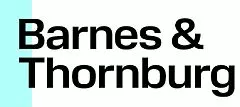- within Insurance, Privacy and Real Estate and Construction topic(s)
- with readers working within the Insurance industries
Highlights
These proposed SEC amendments would accelerate the filing deadlines for initial and amended Schedules 13D and 13G
In addition, the amendments would expand the concept of "beneficial ownership" to include reference securities underlying certain cash-settled derivative instruments
The amendments also provide clarification regarding the circumstances in which a Section 13 "group" is deemed to exist
Responding to long-building pressure for change, the SEC has proposed amendments to the beneficial ownership reporting rules under Sections 13(d) and 13(g) of the Securities Exchange Act of 1934 (the Exchange Act). If adopted, the amendments would affect hedge funds and other investors who take significant positions in U.S. publicly traded equity securities.
The SEC casts its proposals as modernizing existing beneficial ownership reporting rules, some of which are decades old. Some of the proposed changes are clearly directed at activist behavior that traditionally has not been seen to implicate the Section 13 reporting regime.
The SEC's proposed amendments are subject to a public comment period ending on the later of April 11, 2022, or 30 days after the proposed amendments are published in the Federal Register.
Highlights of the proposed amendments include:
- Accelerating the filing deadlines for initial and amended Schedules 13D and 13G
- Expanding the concept of "beneficial ownership" to include reference securities underlying certain cash-settled derivative instruments
- Clarifying the circumstances in which a Section 13 "group" is deemed to exist
Accelerated Filing Deadlines for Schedules 13D and 13G
For years, commentators from various quarters have urged the SEC to tighten its beneficial ownership reporting deadlines. That is a key thrust of the proposed amendments.
For quick reference, here is a summary of the proposed, accelerated filing deadlines for Schedules 13D and G:
|
Schedule 13D |
Current Requirement |
Proposed Requirement
|
Rule(s) |
|
|
Initial Filing
|
10 days after acquiring more than 5% beneficial ownership or losing eligibility to file on Schedule 13G
|
Five days after acquiring more than 5% beneficial ownership or losing eligibility to file on Schedule 13G |
13d-1(a), (e) and (f)
|
|
|
Amendment
|
Promptly after material change to facts set forth in previous Schedule 13D
|
One business day after material change to facts set forth in previous Schedule 13D |
13d-2(a)
|
|
|
Schedule 13G |
Current Requirement |
Proposed Requirement
|
Rule(s) |
|
|
Initial Filing – QII
|
45 days after end of calendar year in which beneficial ownership exceeds 5%; or 10 days after end of month in which beneficial ownership exceeds 10% as of last day of such month
|
Five business days after end of month in which beneficial ownership exceeds 5% as of last day of such month
|
13d-1(b) |
|
|
Initial Filing – Passive Investor
|
10 days after acquiring more than 5% beneficial ownership
|
Five days after acquiring more than 5% beneficial ownership
|
13d-1(c) |
|
|
Amendment – QII or Passive Investor
|
45 days after end of calendar year in which any change occurs in the information previously reported on Schedule 13G
|
Five business days after end of month in which, as of last day of month, there is a material change in the information previously reported on Schedule 13G
|
13d-2(b) |
|
|
Amendment – QII
|
10 days after end of month in which beneficial ownership exceeded 10% as of last day of such month; and thereafter, 10 days after end of month in which beneficial ownership increased or decreased by more than 5% of the class as of last day of such month
|
Five days after exceeding 10% beneficial ownership; and thereafter, five days after increasing or decreasing beneficial ownership by more than 5% of class |
13d-2(c) |
|
|
Amendment – Passive Investor
|
Promptly after acquiring more than 10% beneficial ownership; and thereafter, promptly after increasing or decreasing beneficial ownership by more than 5% of class
|
One business day after acquiring more than 10% beneficial ownership; and thereafter, one business day after increasing or decreasing beneficial ownership by more than 5% of class
|
13d-2(d) |
|
Schedule 13D
Schedule 13D is the default beneficial ownership reporting form. As noted below, certain eligible investors may elect to report on Schedule 13G instead.
Initial Filing. Rule 13d-1(a) currently requires an investor to file Schedule 13D within 10 days after acquiring more than 5 percent beneficial ownership of a class of voting equity securities registered under Section 12 of the Exchange Act (covered class). The SEC proposes shortening this initial filing deadline to five days.
Amendments. An investor currently must amend its Schedule 13D "promptly" pursuant to Rule 13d-2(a) following a material change in the facts set forth in the prior disclosure. The term "promptly" is not defined. The SEC proposal would discard that standard and instead require a Schedule 13D amendment to be filed within one business day after the material change.
Schedule 13G
The proposed amendments would affect both types of investors who file electively on Schedule 13G in lieu of Schedule 13D. These are qualified institutional investors (QIIs), who file under Rule 13d-1(b) and "Passive Investors," who file under Rule 13d-1(c). The proposed amendments also would affect so-called "Exempt Investors," who mandatorily file on Schedule 13G pursuant to Rule 13d-1(d).
Qualified Institutional Investors
To file on Schedule 13G as a QII, the investor must be a type of enumerated institution. It also must certify that it has acquired the securities in question (i) in the ordinary course of its business and (ii) not with the purpose or effect of changing or influencing control of the issuer, or in connection with or as a participant in any transaction having that purpose or effect (control purpose).
Initial Filing. Current Rule 13d-1(b) generally states that a QII must file an initial Schedule 13G within 45 days after the end of the calendar year in which the QII first exceeds 5 percent beneficial ownership of a covered class, if the QII remains above 5 percent at year-end. However, if the QII exceeds 10 percent beneficial ownership as of the last day of any month during the calendar year, the QII must file its initial Schedule 13G within 10 days after that month-end.
The SEC would dispense with the current approach to establishing a QII's initial filing deadline. Amended Rule 13d-1(b) would provide simply that if a QII exceeds 5 percent beneficial ownership as of the last day of a calendar month, the initial Schedule 13G is due within five business days after that month-end.
Amendments. Under current Rule 13d-2(b), a QII that has an existing Schedule 13G on file must file an annual amendment within 45 days after the end of each calendar year if, as of year-end, there are any changes in the information previously disclosed. In addition, current Rule 13d-2(c) states that if a QII exceeds 10 percent beneficial ownership as of the last day of a calendar month, it must amend its Schedule 13G within 10 days of that month-end; thereafter, if the QII's beneficial ownership changes by more than 5 percent of the covered class as of the last day of a month, a further amendment is due within 10 days after that month-end.
The SEC would eliminate the current annual Schedule 13G amendment system. Instead, revised Rule 13d-2(b) would require an amendment within five business days after the end of any month in which, as of the end of that month, there was any material change to the previously reported information. Revised Rule 13d-2(c) would require a QII to amend its Schedule 13G within five days after exceeding 10 percent beneficial ownership, and thereafter within five days after increasing or decreasing its beneficial ownership by more than 5 percent of the covered class.
Passive Investors
To file on Schedule 13G as a Passive Investor, the investor must not be reporting as a QII and must have less than 20 percent beneficial ownership of the covered class. A Passive Investor also must certify that it has not acquired the securities with a control purpose.
Initial Filing. Current Rule 13d-1(c) requires a Passive Investor to file its initial Schedule 13G within 10 days after acquiring more than 5 percent percent beneficial ownership of the covered class. The SEC proposes to shorten that deadline to five days.
Amendments. Under existing Rule 13d-2(b), a Passive Investor that has a Schedule 13G on file must file an annual amendment within 45 days after the end of each calendar year if, as of year-end, there are any changes in the information disclosed in the previous filing. Current Rule 13d-2(d) states that a Passive Investor must amend its Schedule 13G promptly upon acquiring more than 10 percent beneficial ownership and, thereafter, promptly upon increasing or decreasing its beneficial ownership by more than 5 percent of the covered class.
The SEC would abandon the annual Schedule 13G amendment for Passive Investors in the same way it intends to do for QIIs. Under revised Rule 13d-2(b), a Passive Investor would have to amend its Schedule 13G within five business days after the end of any month in which, as of the end of that month, there was any material change to the previously reported information. In addition, the proposals would replace the current Rule 13d-2(d) "prompt" amendment standard with a one-business-day deadline for reporting the acquisition of more than 10 percent beneficial ownership or thereafter changing beneficial ownership by more than 5 percent of the covered class.
Switching to Schedule 13D After Losing Schedule 13G
Eligibility
A QII or a Passive Investor loses its eligibility to report on Schedule 13G if it adopts a control purpose. A Passive Investor also loses Schedule 13G eligibility if it reaches 20 percent beneficial ownership. Current Rules 13d-1(e) and (f) provide that the investor must file a Schedule 13D within 10 days of losing Schedule 13G eligibility. The SEC proposes to shorten that deadline to five days.
Change to EDGAR Cut-Off Time
In recognition of the practical challenges associated with shortened filing deadlines, the SEC would extend the daily EDGAR cut-off time for Schedule 13D and G filings from 5:30 p.m. to 10 p.m. Eastern time.
Cash-Settled Equity Derivatives Held With Control Purpose
An investor may obtain synthetic long exposure to an issuer's equity securities by entering into a cash-settled derivative security relating to a specified notional amount of those "reference securities." Traditionally it has been understood that, absent non-standard terms, the long party to a cash-settled equity derivative does not have beneficial ownership of the reference securities. This is because such an instrument normally does not confer on the long party voting power or investment power – the two hallmarks of beneficial ownership under Rule 13d-3.
Various commentators have expressed concern that the traditional understanding does not address the possibility that – despite the absence of voting or investment power formally attributable to the equity derivative's long party – commercial realities may motivate the short party to exercise voting or investment power over its hedge shares in a manner it believes will reflect the long party's interests, and may lead to the accumulation of large blocks of hedge shares that eventually could be deployed to influence control of the issuer.
The SEC's proposals respond to those concerns to some extent. New Rule 13d-3(e) would deem the long party to a cash-settled equity derivative security to be the beneficial owner of the reference securities if the long party held the derivative security with a control purpose. For purposes of the proposed rule, "derivative security" would have the same meaning as in Rule 16a-1(c) under the Exchange Act. The proposed rule contains detailed instructions for calculating the number of reference securities that would be deemed beneficially owned by the cash-settled derivative holder.
Notwithstanding its general borrowing of the Rule 16a-1(c) definition of derivative security, proposed Rule 13d-3(e) explicitly excludes cash-settled security-based swaps from its purview. The SEC separately has proposed new Rule 10B-1 to require public disclosure relating to security-based swap positions. The SEC believes that Rule 10B-1, if adopted, "would provide sufficient information regarding holdings of security-based swaps such that additional regulation under [Section 13] at this time would be unnecessarily duplicative."
Clarifying "Group" Formation
Section 13(d)(3) of the Exchange Act provides that when two or more persons "act as a group for the purpose of acquiring, holding, or disposing of securities of an issuer," the group is deemed a "person." This means that if the group members collectively exceed 5 percent beneficial ownership, the group will have a reporting obligation. A key purpose of the SEC's proposals is to illuminate – some would say practically expand – the circumstances in which a "group" exists.
"Agreement" Not Necessary for Group
Formation
Many court decisions addressing whether a group exists have taken as given that multiple investors must reach an "agreement" in order to form a group. These decisions have tended to fasten on Rule 13d-5, which states that "[w]hen two or more persons agree to act together for the purpose of acquiring, holding, voting or disposing of equity securities of an issuer, the group formed thereby shall be deemed to have acquired beneficial ownership" of all issuer securities held by those persons (emphasis added).
It is fair to say that many hedge funds have adopted this agreement-focused approach to analyzing when a group is formed. More particularly, it appears that activist funds involved in "wolf-pack" behavior take great care to avoid reaching an "agreement" in the belief that this will preclude them being seen as a group.
The SEC's proposing release asserts that the presence of an agreement is not actually a prerequisite for group formation. The SEC highlights the simple "act-as-a-group" language of Section 13(d)(3) and maintains that the "agreement" reference in Rule 13d-5 is merely a non-exclusive example of the broader standard embedded in the statute. Accordingly, the proposed amendments would remove from Rule 13d-5 its reference to "two or more persons [who] agree to act together" and replace it with "two or more persons [who] act as a group under Section 13(d)(3)." For some investors, this change might make the task of determining whether a group exists even more circumstances-intensive than they already find it to be.
Tipper-Tippee Behavior Giving Rise to Group Status
A particular example of alleged wolf-pack behavior consists of an activist hedge fund acquiring more than 5 percent beneficial ownership and then, prior to publicly disclosing that fact in its Schedule 13D, alerting fellow activists about its acquisition. As a tactical matter, dispensing "tips" of this sort may enable the lead activist to assemble a loose-knit coalition of allies who share the lead activist's control-related goals (e.g., who may be expected to vote the same way as the lead activist at an upcoming shareholders meeting). From an economic perspective, tipping allows an ally to purchase shares prior to the price spike that will be caused by the lead activist's Schedule 13D; and if an ally who benefits from the lead activist's informational largesse is itself the lead activist in a future campaign, it might be expected to return the favor.
The SEC proposes to address the pre-filing tipping phenomenon by adopting new Rule 13d-5(b)(1)(ii). It would deem a group to exist if an acquiring investor shares non-public information about its upcoming filing with another investor with the purpose of inducing that investor to purchase shares of the issuer, and that investor in fact makes such a purchase. The group would be deemed to come into existence (i.e., would be deemed to have acquired beneficial ownership and thus assumed a reporting obligation) on the earliest date on which the tippee made a purchase based on the shared information.
Exemption from Group Status for Non-Control-Related Communications
The SEC's proposed amendments would provide some comfort on the question of when communications among shareholders might imply the existence of a group. Revised Rule 13d-6 would clarify that two or more persons will not be deemed a group "solely because of their concerted actions with respect to [an] issuer's equity securities, including engagement with one another or the issuer," as long as communications among such persons are not undertaken with a control purpose, and such persons are not actually obligated to take any concerted actions (as they would be, for example, by assuming obligations under a cooperation or voting agreement).
Implications for Section 16 and Contracts Using Section 13(d) Concepts
Section 16 of the Exchange Act imports the beneficial ownership standards of Section 13(d) in determining when an investor is subject to Section 16 as a 10 percent insider. A great deal hinges on that determination, as an investor covered by Section 16 is subject to its transaction-reporting and short-swing profit disgorgement provisions. By broadening the circumstances in which Section 13(d) beneficial ownership is deemed to exist, the SEC's proposed amendments would be expected to bring more investors within scope of Section 16.
Section 13(d) standards of beneficial ownership also may be integral in the contractual setting. For instance, debt agreements, employment contracts, standstill agreements, and shareholder rights plans routinely refer to Section 13(d) terms to define when a contractually meaningful event –such as change of control, the formation of a group, or an impermissible level of stock accumulation – has occurred. To the extent the SEC's proposals are adopted, contract parties will need to assess their impact from a private-ordering perspective.
The content of this article is intended to provide a general guide to the subject matter. Specialist advice should be sought about your specific circumstances.



